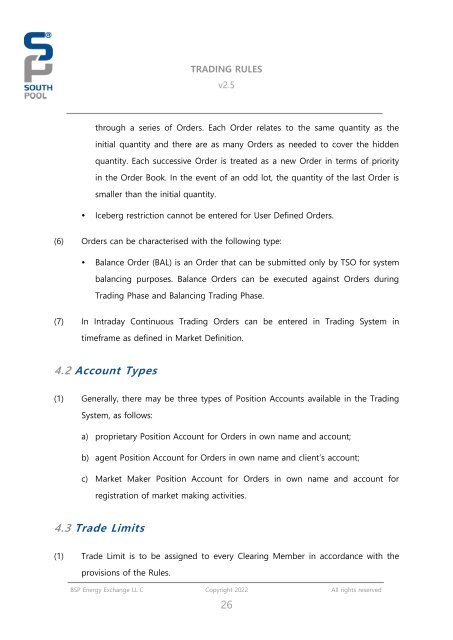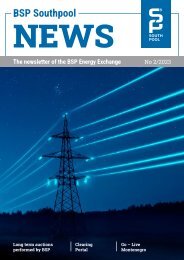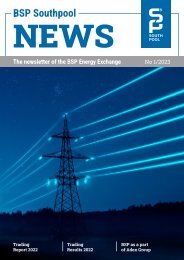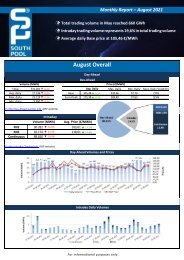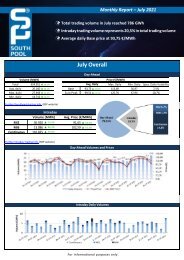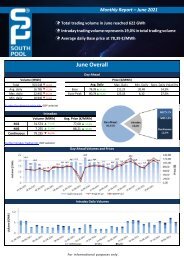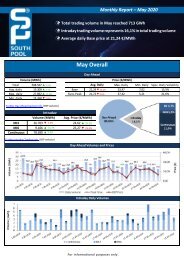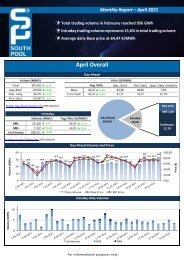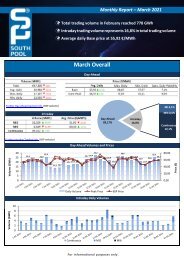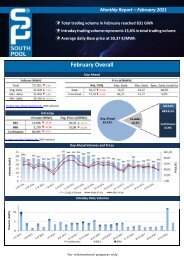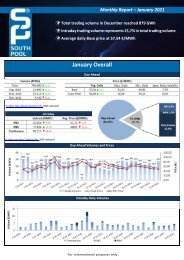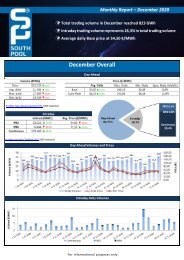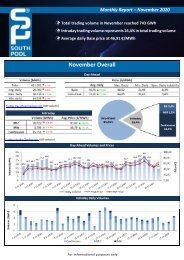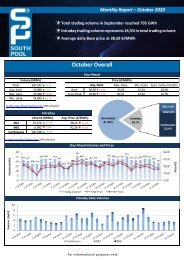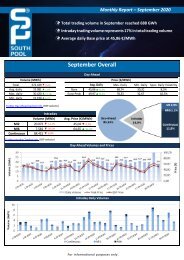Trading Rules
BSP Rules Trading Rules v2.5
BSP Rules Trading Rules v2.5
You also want an ePaper? Increase the reach of your titles
YUMPU automatically turns print PDFs into web optimized ePapers that Google loves.
TRADING RULES<br />
v2.5<br />
through a series of Orders. Each Order relates to the same quantity as the<br />
initial quantity and there are as many Orders as needed to cover the hidden<br />
quantity. Each successive Order is treated as a new Order in terms of priority<br />
in the Order Book. In the event of an odd lot, the quantity of the last Order is<br />
smaller than the initial quantity.<br />
• Iceberg restriction cannot be entered for User Defined Orders.<br />
(6) Orders can be characterised with the following type:<br />
• Balance Order (BAL) is an Order that can be submitted only by TSO for system<br />
balancing purposes. Balance Orders can be executed against Orders during<br />
<strong>Trading</strong> Phase and Balancing <strong>Trading</strong> Phase.<br />
(7) In Intraday Continuous <strong>Trading</strong> Orders can be entered in <strong>Trading</strong> System in<br />
timeframe as defined in Market Definition.<br />
4.2 Account Types<br />
(1) Generally, there may be three types of Position Accounts available in the <strong>Trading</strong><br />
System, as follows:<br />
a) proprietary Position Account for Orders in own name and account;<br />
b) agent Position Account for Orders in own name and client’s account;<br />
c) Market Maker Position Account for Orders in own name and account for<br />
registration of market making activities.<br />
4.3 Trade Limits<br />
(1) Trade Limit is to be assigned to every Clearing Member in accordance with the<br />
provisions of the <strong>Rules</strong>.<br />
BSP Energy Exchange LL C Copyright 2022 All rights reserved<br />
26


